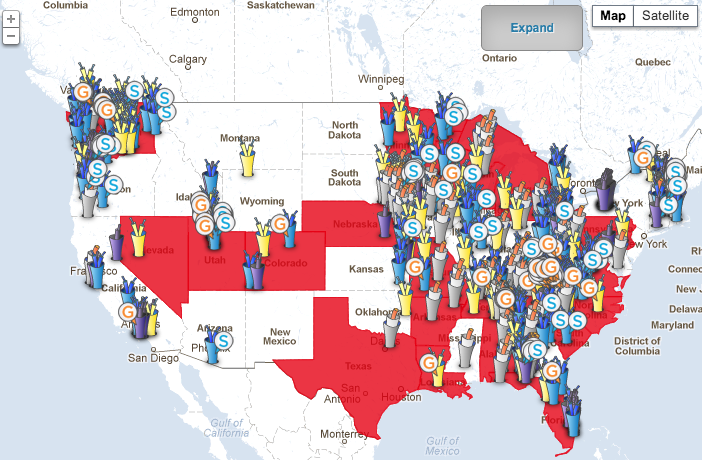T
he gap between American’s that have broadband internet access and those that do not has become and increasing problem within the United States over the last several years. This “digital divide” has grown sharply as large monopolistic telecommunication companies have refused to build out there networks to poor or rural communities. There is currently a raging battle between incumbent internet service providers that want to maintain their profits and marketshare, and local governments that want to provide fast and affordable internet access to their residents. The independent newscast Democracy Now does a good job exploring the issue in the video below.
In this post however, I’d like to point out on one small such municiple broadband project underway right in my backyard of Southern Arizona.
The Tohono O’odham Utility Authority
The Tohono O’odham Utility Authority (TOUA), a tribal run entity, is currently working on building out a fiber network to serve Tohono O’odhama communites across southwestern Arizona. The project mananger Kristan Johnson was kind enough to give a short interview about what orgins of the project as well as the goals of the network.
The project began with TOUA seeking funding to upgrade its internet network from the USDA’s Rural Utility Service which offers Rural Broadband Access Loans to utilities that serve rural communities. However, during the loan application process TOUA received federal grant money from the American Recovery and Reinvestment Act of 2009 (aka the Obama Stimulus). This specific grant money was part of the FCC’s National Broadband Plan which called for 4Mbps download speeds, and 1Mbps upload speeds, for all Americans. Having received this money TOUA went to work upgrading their exisitng 56kb/s dial-up services, and their 1Mbp/s DSL service, to a 10Mbp/s symmetric fiber to the node network. This new fiber network is near completion and will serve 8 regional communities including Santa Rosa and Sells with more remote areas being served by a wireless broadband network.
One disconcerting fact though is how nearby Kitt Peak Observatory, used by the University of Arizona, boasts a 1Gb/s connection which is 100 times fast than what local residents will receive Even so this new tribally owned fiber network is an important step to bringing the most marginalized American communities into the digital age.


This is for the free access to public content. We can’t allow the privatization of telecoms. As citizens, we have the right to speak out and fight for our human rights.